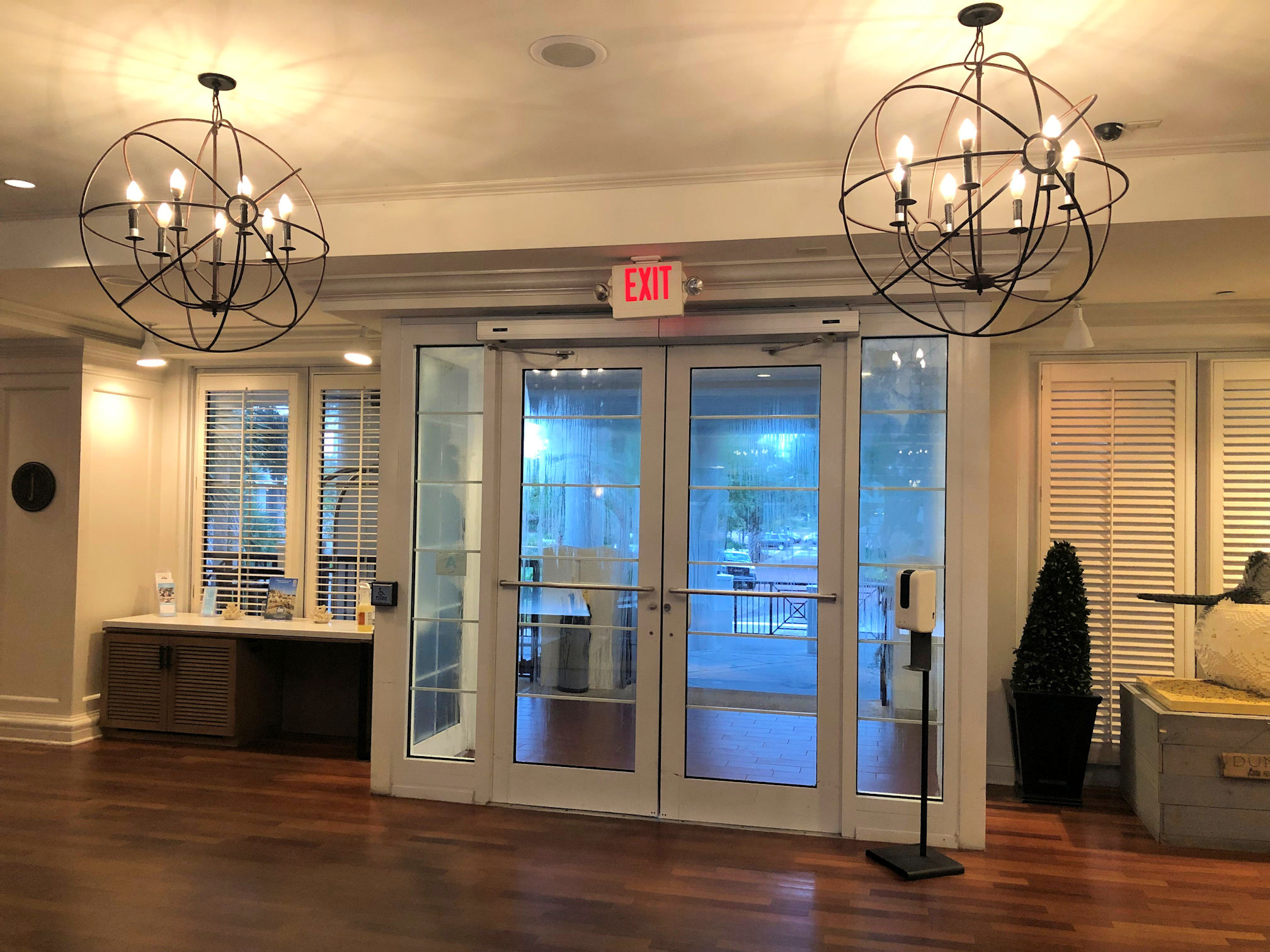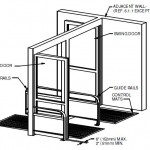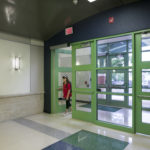When I spend a few days with a bunch of my fellow door hardware compañeros, I realize how frequently we look at doors. Most people just walk on through, but not us…we’re not only observing which products are installed and noticing the details, sometimes we go back for a second look.
That was the case with these doors on the main entrance of the hotel where we are currently having our BHMA meeting. Can you tell what made me do a double-take? I’ll let you know in tomorrow’s post! Caution: Teachable moment ahead!
I’ll give you a hint…the key is in the videos from the interior and exterior:
Any ideas what would make me curious about this set of doors?
Here’s the answer!
You need to login or register to bookmark/favorite this content.












What is triggering the doors to open? I see an inside actuator, but it isn’t being used. If they are using a motion detector, then this would be classified as a full power/high energy opening, and I don’t see any safety devices.
I’m not seeing any SIGNAGE (or any indication, for that matter,) that would make a person aware that they’re approaching an automatic door…
Appears if they have internal deadbolt and possibly upper throw rods to secure these doors. This would prevent free egress without panic hardware installed. Also set up as ANSI A156.10 operation which would require sensors on both sides of opening and guard rails.
No signage and an unknown act opening the doors.
The actuator must just be for back up if the doors fail to operate correctly. Any issue with the thumb turns with no mullions?
Someone at the front desk has a button to open the door. If you look at the interior video, the door didn’t open till the gentleman at the desk noticed the man on his way out.
Where is the “Knowing Act” device?
There were actuators at both the valet station and the front desk and the employees would sometimes press them and sometimes not. I walked up to it multiple times and they pressed the actuator after I was already pushing or pulling the door.
What is the code on an operator where someone else activates it out of the users sight?
Interesting opening!. Had to crack the standard here: BHMA A156.19. Not known if you’ve got a low-energy operator or a power-assist device in this opening, but in either case we need signs on the doors indicating either “CAUTION AUTOMATIC DOOR”, or “EASY OPEN DOOR”. If an automated opening, we need actuators both interior & exterior, and I’d want to see safety sensors to arrest door swing if someone’s in arc-of-travel. If a power-assist opening, the signs need to inform the user to use the switch (not really an ‘actuator’ in that application — still needed both sides of opening) to initiate the power assist. But, power-assisted easy-open doors don’t necessarily need wall switches, but then the necessary door signage would need to inform the user “EASY OPEN DOOR — PUSH TO OPERATE.”.
Opening needs a little attention here, but glad to see that we’ve got something (hoping it’s power-assist type!) available for the users here. BTW: I’ve had great success with a concealed in-floor power-assist device on an exterior 8-0 x 10-0 grand entrance pair of doors on a recent hotel project — little kids run up and open the door for Mom & Dad.
@TomBreese: did you actually look at the video clips? Take another look… –Tom Breese
Leaving the lobby — It kind of looked like the woman behind the desk hit a switch at the desk… she sees the man, the doors open, and she’s asking him if he needs a hand.
Approaching from outside — is there a motion detector in that back-box on the façade?
Is it the location of the REX sensor?
I would expect a occupancy such as a hotel to be required to have some way out of these doors in an emergency such as a panic bar. It looks like the doors have a key lock.
It looks like someone at the reception desk is activating the doors. The narrow style hook bolt isn’t appropriate for a marked exit. And per the previous comment, automatic door signage is missing and should be present whether these doors are low energy or high energy.
If the doors are indeed securable with the adams rite lock, what is securing the inactive leaf. bolting the door into an active leaf would be a recipe for disaster should the doors try to open or be forced open while bolted. I would imagine the glass in both doors shattering in the process or at least twisting the frame to the point they’d need replaced. Let along any other code violations that they may have created.
Also the narrow dimension between the open doors and opposing sidelites.
Along with the above comments, it has an EXIT sign. This requires free egress and the thumb turn would not meet the requirement.